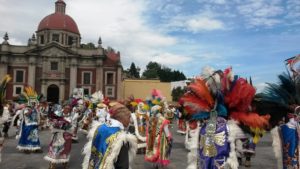It was standing room only in the Los Angeles Central Library last July. The crowd of some 300 ranged from multigenerational Mexican immigrant families to young Californians of indigenous Mexican extraction to academics, some of whom had traveled across the country for the event.
The participants enjoyed readings of poetry and short stories and a rap performance by Pat Boy. And yet none of the material was in Spanish — it was in Zapotec, Tzotzil, Mayan and other languages spoken long before Europeans washed up on the shores of what is now Mexico.
Octavio Paz, Juan Rulfo, Rosario Castellanos, Carlos Fuentes … Mexico’s Spanish-language literature is one of the richest in Latin America. But for hundreds of years, the literature written in languages that existed before European colonization were all but silenced on the global scene — even though they were well-recognized by many Mexicans. Now, interest in this writing is surging worldwide.
Few Americans realize just how indigenous Mexico really is. Most tourists timidly hide away in artificial enclaves like Cancun, Ixtapa, and Cabo San Lucas, protected from having any authentic experiences with the lovely local culture.
But literally hundreds of Native American cultures, languages, and idioms not only survive, but are still dominant on many Mexican villages. It’s not uncommon to encounter people who speak little or no Spanish. Although Catholic priests tried their best–often resorting to torture and executions–native beliefs thrive to this day, unlike in the U.S., where ethnic cleansing was far more successful.
That said, there’s little question that traditional ways and languages are under assault by modern society, as they are everywhere, not to mention the loss of traditional lands–and traditional farming practices–to giant corporations, as a result of NAFTA.
NAFTA did far more damage to Mexico than it did to the USA, despite any ravings one might hear from the White House these days. I (Storm) was there a year after NAFTA passed, and saw dozens of tent encampments in Mexico City.
Each tent city (actually cardboard boxes, for the most part) contained thousands of fired workers, mostly managers who were just a few years from retirement. They lost their jobs when American corporations bought their employers, and fired senior workers so they could hire cheaper young workers, and boost their bottom line by not having to pay the pensions that were due.
All this was in accordance with NAFTA provisions. NAFTA was designed to accomplish three goals: 1) bypass environmental regulations; 2) bypass worker protections; and 3) reduce or eliminate taxes and tariffs on corporate operations. It accomplished all three quite successfully. One should remember that NAFTA was written by and for global corporations, not by the three national governments who put their names to it. Canada, the USA, and Mexico all got the short end of the NAFTA stick: only multinational corporations came out ahead.
Now, an increase in global interest in Mexico’s indigenous languages can be seen in the surge in translations.
Sales figures and other data are difficult to come by, but book lovers in New York can find English or Spanish versions of contemporary literature written in Mazatec, which is still spoken by 220,000 people, mainly in northern Oaxaca.
In Berlin, Germany, you can find German translations of works written in Purépecha, aka Tarascan, which is spoken by some 125,000 people in the highlands of Michoacán.
As a Mexico lover, this is music to my ears.
All photos by Storm Cunningham.





